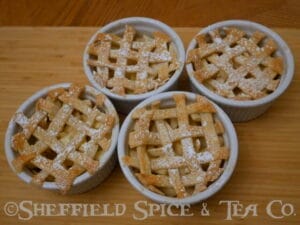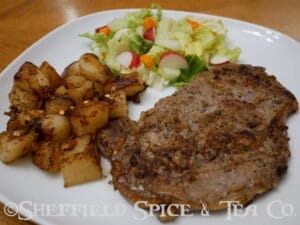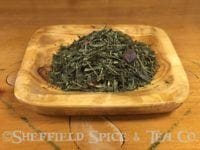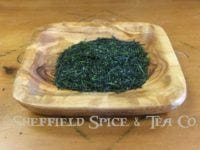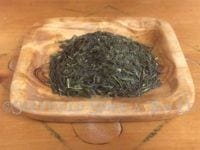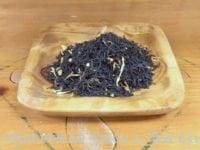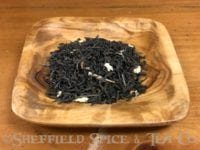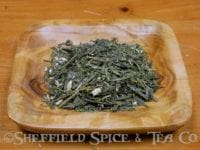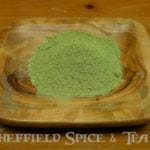Matcha Green Tea
$27.00 – $115.00
We do not ship Matcha between April 1st and September 30th of the year because of the potential for higher weather temperatures, which can oxidize and ruin the Matcha and turn it yellow. If we feel at other times that the temperature is too high and could spoil the Matcha during shipping, we will contact you and give you options. We sell a very high quality grade of Matcha, which we buy directly from families in Japan. Matcha is the ground leaf, which must be kept cooler in an airtight container to avoid spoilage.
Description
Matcha Green Tea
Our Matcha Green Tea is Ceremonial grade, which is the highest grade available. Matcha is made from Gyokuro, which is shaded during the last weeks before it is hand-harvested. It has a very fresh grassy, vegetal scent and flavor. Anything less, and all you have is just ground green tea. Quality is everything, which is why we work directly with the plantation owners.
We buy our Matcha and other Japanese green teas, directly from several families in Japan, which have been growers of tea for over 150 years each. They own their plantations, so they grow, process and ship their teas without any middlemen, allowing us to buy at excellent prices and pass the savings on to our customers. To see our other Japanese Teas, please click HERE.
Ceremonial Matcha, is perhaps the most refined tea available on the market today. While all Matcha is finely ground green tea, not all ground green tea is Matcha. It’s like saying all sparkling wine is Champagne, which is not true. From the unique way it is produced to the important place it holds in the cultural life of Japan, few other teas can compare. So beware that many inexpensive, ground green teas are being sold as “matcha”, but they are anything but. Only knowing what real Ceremonial Grade Matcha is, can help you distinguish the real from what is being sold as such. High grade, Ceremonial Matcha is never bitter, always smooth and never inexpensive. And while Matcha is expensive, it also can be overpriced. There are many factors affecting the price of the real, highest quality Matcha, which is why we import direct from the grower family so we can offer a better price.
The first thing you will notice upon opening the bottle is that Matcha is finely powdered and looks like an emerald colored flour. This characteristic truly sets it apart from other teas. When brewed, the powdered leaf is not strained or left in the pot, but is whisked into a frothy concoction and consumed. Because the leaves themselves are consumed in the drink, brewed Matcha contains higher concentrations of vitamins and antioxidants than most other teas, green, herbal, or otherwise. In fact, brewed Matcha contains nearly 10 times the polyphenols and antioxidants of regular teas, 2 times the antioxidants of a glass of red wine, approximately 9 times the beta-carotene of spinach, and 4 times that of carrots.
Matcha is produced using pure Gyokuro leaves, a variety of Japanese tea bush that is shaded beneath special mats for 3 weeks before plucking. The shading forces the plants to produce a higher than normal chlorophyll content and gives the leaves a rich green color. Once plucked, the leaves are steamed and dried. Tea at this stage of the process is known as Aracha. Next, the Aracha is stripped of all stems and veins resulting in a pure leaf known as Tencha. Tencha is then stone ground into its finely powdered form.
In Japan, Matcha is considered an integral part of the very essence and soul of the country itself. The tea makes its first appearance in Japanese tea manuals sometime during the 12th century, making it one of the country’s most ancient varieties of tea. Matcha is also Japan’s most important tea since it is the tea used in the famous tea ceremony, or Chanoyu. This ceremony is an elegantly rigid affair that developed over the centuries as a transformative and meditative practice. It was originally conceived by the ancient Samurai, the noble class of warriors famous for their elaborate costume and highly regimented lifestyle.
The Samurai learned the fine art of brewing Matcha from Buddhist monks sometime in the 13th century. Japanese monks believed the tea possessed qualities conducive to meditation and drank it during religious ceremonies. The Samurai learned that meditating through the drinking of Matcha could restore them physically and prepare them mentally for battle. Drawing on their strict code of conduct, they developed an elaborate framework called wabi within which to brew and consume Matcha. Wabi loosely translates as follows: Quiet, sober refinement characterized by humility and restraint that celebrates the mellow beauty that time and care impart. Over the centuries, this philosophy, developed by the Samurai, gave birth to the Japanese tea ceremony we are familiar with today. It is in reverence to their noble way of life that we present this amazing tea.
Preparing Matcha
To prepare Matcha, measure 2 Bamboo Matcha spoons (chashaku), or 1 teaspoon of Matcha powder, into a Matcha bowl or other small bowl of about 6-8″ in diameter and not too deep. You need room to use the Matcha whisk in “W” motion but don’t use too large of a bowl. You can use a small, fine sifter to help get rid of any clumps until you perfect the technique of using the whisk to break up the clumps.
Boil fresh water, and allow to set for a minute or so until the water temperature drops to about 180-185 degrees. Pour “3 gulps” or about 6 oz of the hot water into the bowl with the Matcha powder. Holding the bowl in one hand and the Matcha whisk in the other, slowly whisk in a “W” motion using your wrist, not your arm, increasing the speed as the powder gets thoroughly wet and blended into the water. Continue for one to two minutes until frothy. You can lift the whisk up slightly as the tea starts to get a bit frothy, allowing the tea to get properly blended without splashing out of the bowl. What done, slowly remove the whisk from the bowl and set aside.
When blended, drink the Matcha tea straight from the bowl. You do not let the Matcha settle or it will separate. Unlike other teas, Matcha is drank right after preparing. If you would like to consume your Matcha more leisurely, then try our Matcha Genmaicha, which uses the same Ceremonial Matcha, dusted over the roasted rice Genmaicha Tea, which we also buy from the same family, using the same Matcha.
We sell other Green Teas which we import from the same family in Japan. So, if you enjoy Green Teas and would like to try our other Japanese teas, please try our Konacha, Fukamushi Sencha, Matcha Genmaicha, Genmaicha, Bancha, Houjicha, and Kukicha. Their quality is unsurpassed for Japanese Teas.
Contains: Green Tea.
Additional information
| Weight | 0.500 oz |
|---|---|
| Dimensions | 0.000000 × 0.000000 × 0.000000 in |
| Matcha Sizes | 4 oz package, 0.5 oz jar, 1.5 oz jar, 16 oz package, 8 oz package |



